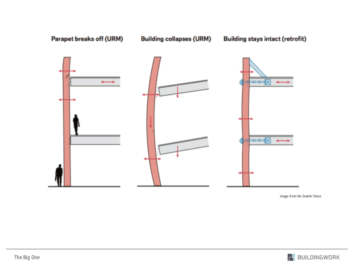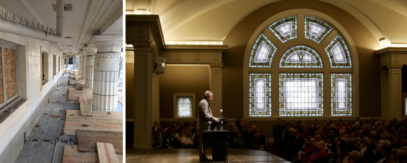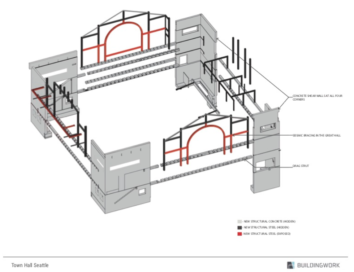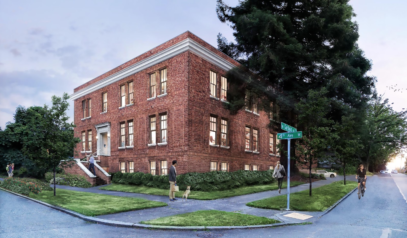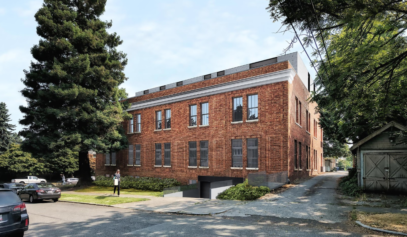Date November 9, 2018
Preserving history and community with seismic retrofits
Seismic risk is a significant social concern as well as a health and economic issue. There are around one thousand unreinforced masonry (URM) buildings in the Seattle area, each are extremely vulnerable to earthquakes at any moment in time. This is why the building code requires seismic retrofits when making substantial alterations to these buildings; to prevent major structural damage, or outright collapse of a building and avoid risk to human life.
Bringing these buildings up to code presents a new set of challenges for building owners and developers. Renovating historic buildings to be able to withstand a quake is delicate work. If not done carefully, the process of updating these buildings may damage or destroy the very features that make them significant. It’s important to engage an architect for these projects who understands the various approaches that can prevent potential damage from well-intentioned, but insensitive, retrofit procedures, thereby preserving what’s special about the building, while also protecting the building from the damage caused by seismic activity.
An example of this is our work on the Town Hall Seattle renovation, a vital cultural institution in downtown Seattle that was at risk of devastating damage in an earthquake. This renovation project creates a state-of-the art multi-venue performing arts facility within the original historic structure, but we needed to do more than simply update the facilities for cultural events taking place here. The renovation also involves the seismic stabilization of the building including the large dome above the 900-seat Great Hall, the replacement of all existing building systems, and a host of accessibility improvements.
We carefully designed each of the upgrades for Town Hall Seattle in order to minimize the impact on the historic architecture. There were existing structural issues, but we didn’t want to add steel braces because it would detract from the character of space. Instead of steel braces, our solution was the use of shear walls in the stairwells and sensitive use of steel around the stained glass window.
Another example of a seismic retrofit that does not negatively impact the building it is preserving, is our Queen Anne Exchange project. This Seattle Historic Landmark building was built in 1921 as a as a telephone switchboard operation facility. BuildingWork is working with the Faul Company to both preserve the unique historic character of this vacant, un-maintained warehouse and transform it into much-needed rental housing. We consider it a win-win for both preservationists and rental housing advocates.
The Queen Anne Exchange project scope includes a complete seismic retrofit, restoration of the historic brick and terracotta façade, a new top floor addition, a new parking garage in the basement, multi-family residential units, a common roof terrace, all new mechanical and electrical systems, full life-safety and accessibility upgrades.
There are many more vulnerable buildings in Seattle and surrounding areas that need to be protected from the next major seismic event. It’s not simply to protect these buildings from earthquake damage or to keep residents of Seattle safe; it’s much more than that. We need to find ways to accommodate a growing city while not losing what’s unique and special to Seattle’s urban fabric. Preserving buildings and making sure they are equipped to survive the next earthquake helps protect the city, its history, and the community.


